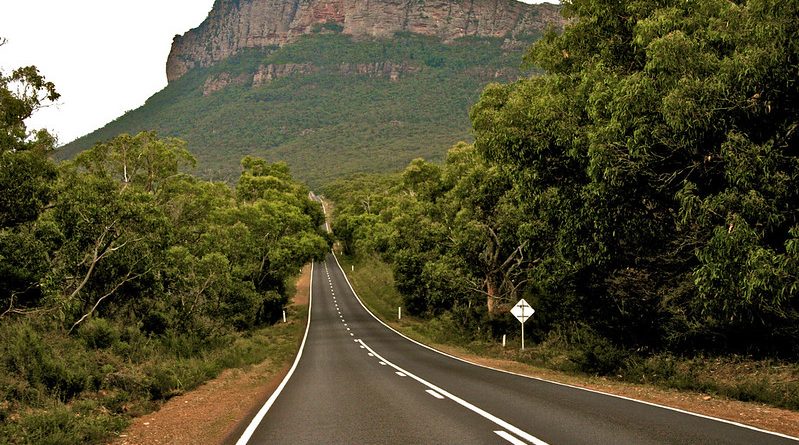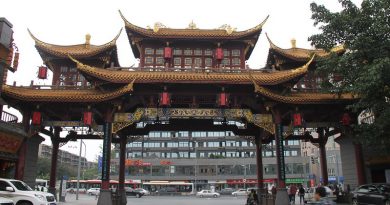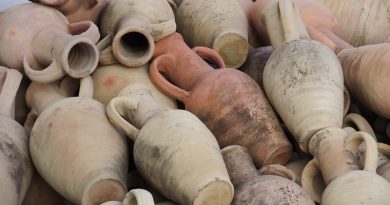Destinations: Victoria
Melbourne
What Melbourne lacks in the natural attractions of its northern sister Sydney, it more than makes up for in the dizzy pursuit of man-made pleasures. Melbourne boasts spacious public gardens, elegant Victorian-era architecture, fabulous shopping and, above all, food, glorious food. The ethnic diversity that makes up the bulk of Melbourne’s friendly and stylish population find its best expression in literally thousands of eclectic dining establishments to indulge yourself in. Bring your appetite – the heady array and quality of cuisine on offer will tantalise even the most hardened exerciser of self-restraint. Ethnic enclaves all over the city and its suburbs, including central Melbourne’s Chinatown, Carlton’s Little Italy on Lygon St and Latino-flavouredJohnston St in Fitzroy serve up their culture’s finest. In Richmond, the largest Greek population in the world outside of Greece has created a centre for taverna style dining on Swan St, while more recently, a burgeoning Vietnamese population has given rise to Little Saigon on Victoria St.
Melbourne’s vintage trams are a great way to soak up the laid-back atmosphere of this capital city at street level – for a uniquely Melbournian experience, the Colonial Tramcar Restaurantserves up more of the city’s acclaimed cuisine against an ever-changing backdrop of the city itself. A thriving band scene provides night time entertainment – a gig at the beachside suburb of St Kilda’s Esplanade Hotel is a must – while culture vultures can enjoy the range of performance arts on offer. Shopping everywhere from the bustling Queen Victoria Market, to the uber-cool young designer haven of Chapel St, to the imported-fashion mecca of the “Paris end” of Collins St, is one of Melbourne’s great pleasures. The sleek 830ft Rialto Towers has an observation deck, from which you can admire a 360-degree aspect of this whole sumptuous feast of a city spread out before you. It’s a great place to enjoy the view and whet your appetite before getting down there and getting stuck into everything on offer.
Great Ocean Road
The Great Ocean Road is a spectacular coastal drive to rival California’s Highway 1. It winds along the south-west coast of Victoria towards South Australia, taking in sections of dramatically weather-beaten coastline, buffeted and battered by roaring seas, as well as maritime villages, verdant rainforest, bush land, and beaches. A striking feature of this stretch of coast are the limestone formations which rise grandly from the ocean, eroded and sculpted by the elements into towering pillars known as the 12 Apostles. In fierce weather, shrieking winds whip the sea into a boiling foam around the bases of these rock stacks and blowholes explode powerfully into the air. You can take on nature at beaches with pounding surf, including Bells Beach(immortalised in the memorable final scene of the movie Point Break) but secluded bays provide calmer swimming; blustery coastal walks can be enjoyed while historic whaling and sealing stations plus shipwreck sites can be explored.
The Grampians
Victoria’s largest national park, The Grampians comprises spectacularly rugged mountain ranges offering the intrepid explorer endless possibilities for rock-climbing, bushwalking and abseiling. Mt Arapiles, in particular, is world-renowned for the quality and range of its climbing routes. For the less adventurous, there are mountain lookouts with panoramic views, scenic strolls and drives – plus a number of wineries producing a variety of excellent ‘drops’. The area features unusual rock formations, cascading waterfalls, colourful flora and numerous galleries of Aboriginal rock art. Lakes and waterways provide superb fishing and magnificent gum-tree forests house a diverse range of fauna. While you are here, don’t miss the Brambuk Living Cultural Centre, run by indigenous communities in celebration of their heritage.
High Country
Victoria’s ski fields can be found in the High Country, an alpine wonderland offering the whole gamut of winter snow sports. The peaks don’t reach the dizzying heights of some of the mountains in Europe and North America, but the area provides plenty of challenges in pristine surroundings, the trails uniquely Australian in being fringed by towering gum trees instead of pines or aspens. The melt-off in the spring and summer months produces fast-running, crystal clear streams and reveals superb bushwalking trails through areas blanketed with wildflowers. Outdoor activities, including horse-trekking, fishing, hang-gliding and whitewater rafting can be enjoyed in the beautiful and diverse surroundings of the Alpine National Park, but for those who appreciate beauty without adrenaline, the Great Alpine Road is a world-class scenic drive winding for 200 miles sthrough the Victorian Alps. The legend of Ned Kelly, Australia’s most famous bushranger, who roamed the area with his gang in the late 1800s, is alive and well here, and gives rise to a number of related attractions, as well as adding an element of folk lore mystique to the surrounds.
Murray River
Stately paddle steamers chug their way up and down the mighty Murray River, as it meanders for 1,500 miles through Victoria from its source in NSW to its end in South Australia. Today, a cruise on a paddle steamer is a leisurely and evocative way of observing this great waterway at close range, but the function of this river and its vessels has not always been recreation. Traditionally, the Murray was an important colonial trade artery, paddle steamers playing a crucial role in transporting supplies to remote locations along the course of the river. The area is steeped in the history of the river-boat era, bought to life not only by paddle boat trips, but by colonial museums and historic trails – for a fascinating glimpse into the past, don’t miss the original port of Echuca and the re-created pioneer settlement at Swan Hill. The Murray irrigates the surrounding barren lands, producing luscious fruit orchards, prosperous vineyards and rolling green golf courses. Naturally, water-based activities are a feature of the area, with everything from canoeing, to water-skiing, to the ultimate river-life experience on offer – living on a houseboat.
Goldfields
The discovery of gold in Victoria in the mid-1800s has left an enduring legacy in almost every aspect of the historical Goldfields region. For a true step into the past, however, look no further than Sovereign Hill in Ballarat – a complete reconstruction of an 19th century gold rush town; a living, interactive museum which immerses the visitor in a bygone age. Bendigo, which features fine architectural examples of the wealth that came with the gold rush, lies above a labyrinthian system of mine shafts, one of which can be explored by descending 130ft underground, decked out with hard hats and miners lights. This town also provides colourful reminders of the gold fever-fuelled flood of Chinese immigrants – visitors can experience a functional joss house and admire processional dragons at the Golden Dragon Museum. While it’s fairly certain that all of the good stuff was snaffled years ago, you can still try your hand at panning for gold, or take the modern option and hire a metal detector. If all that prospecting wears you out and does your back in, the nearby spa towns of Daylesford and Hepburn Springs are renowned for the rejuvenating properties of their mineral springs and a complementary wealth of alternative remedies available.
Article By Sarah Rodrigues



